Montana is known for its beautiful landscapes and breathtaking views, but one of its prized gems is the delicious selection of fruits that grow in abundance throughout the state.
One distinct fruit, in particular, is the mighty huckleberry. Aside from their exquisite flavor, huckleberries hold a special place in the hearts and palates of Montanans, making it their official state fruit.
To us, it may just be another fruit. But to Montanans, it is a reminder of cherished summer days spent foraging in the mountains, filling baskets with these succulent treasures.
They are a symbol of the wild, unspoiled beauty that Montana is continuously embracing.
In this article, we’ll explore all things huckleberry: where to find them, how to store them, and why they make such an excellent addition to any meal or snack.
We’ve also included 5 awesome facts you probably don’t know about huckleberries in this article!
- Related article: Icons of Montana State
Whether you’re a foodie seeking to expand your culinary repertoire or a nature enthusiast with a penchant for discovering nature’s edible treasures, this guide is tailored just for you.
Montana State Fruit Origins
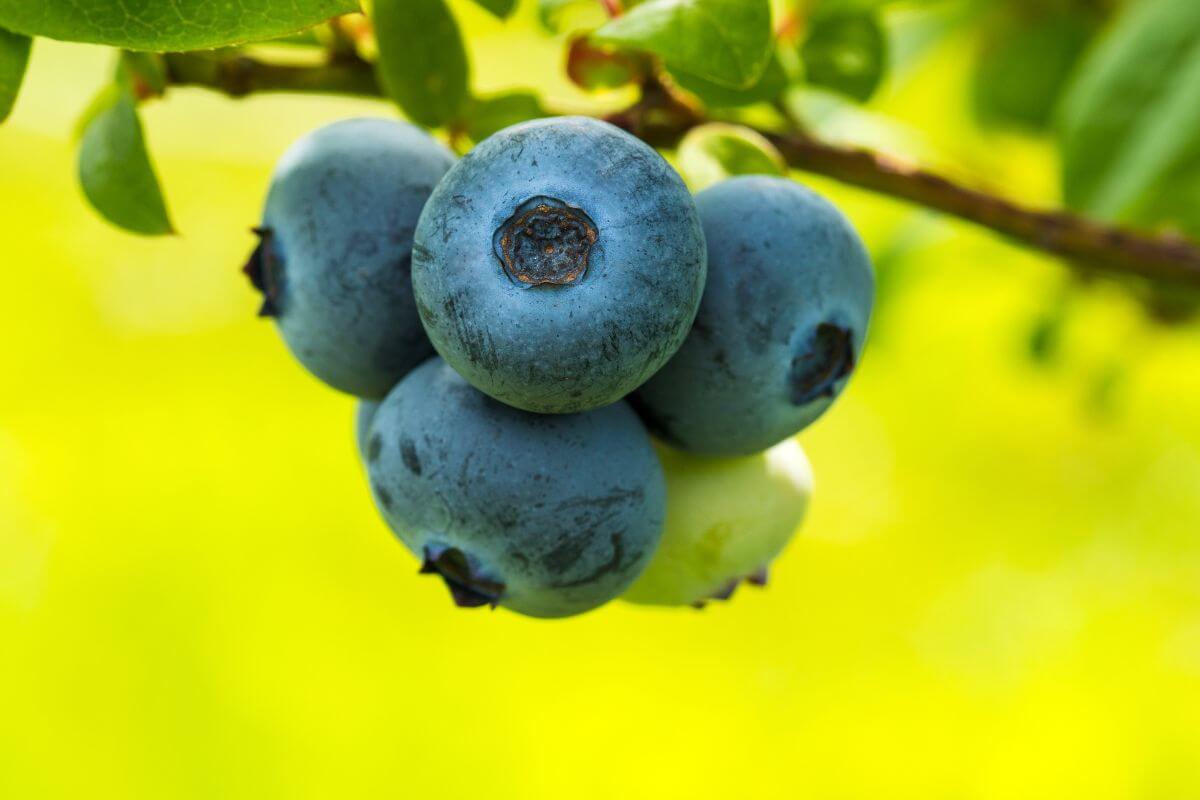
Montana’s state fruit is the huckleberry, a small, dark purple berry that grows wild in the state’s mountainous regions.
The official designation of Montana’s state fruit resulted from the definitive stance on huckleberries of a fourth-grade class from Vaughn Elementary School.
The students, under the guidance of their teacher, reached out to R-Great Falls Rep. Lola Sheldon-Galloway, who took up the initiative to designate the huckleberry as Montana’s official state fruit.
In a signing ceremony held at Vaughn Elementary School last May 10, 2023, House Bill 880 was signed into law by Governor Greg Gianforte.
The huckleberry has been a beloved fruit in Montana for generations, and it holds significant cultural and economic importance to the state.
These berries are used to produce a diverse list of products such as jams and candies which have become household staples in Montana.
They are also known for their health benefits due to their high antioxidant and anti-inflammatory properties.
Montana’s huckleberry season is something that Montanan’s look forward to annually. The competition takes place from mid-August to mid-September as huckleberry picking attracts people from all over the state.
What Is a Huckleberry?

Huckleberry is a fruit native to the northwest, specifically Montana, Idaho, Wyoming, and Washington.
It is a dark-colored berry that resembles a blueberry but is smaller and darker in color.
These delicious fruits are packed with health benefits, as they are high in antioxidants and anti-inflammatory properties. Consuming huckleberries can help improve heart health, lower blood pressure, and reduce inflammation in the body.
Huckleberries are used in a variety of products, such as huckleberry teas, huckleberry smoothies, huckleberry ice cream, and huckleberry candies.
Despite their popularity, huckleberries are not widely cultivated and are mainly grown in the wild, making them a rare and sought-after treat during the huckleberry season.
Huckleberries come in different sizes and colors depending on where they are grown. Those with red color are more tangy while darker-colored ones are more sweet.
Here’s a fun fact about colors, the colors of huckleberries which are red and blue are also part of Montana’s State Colors. Red signifies valor and courage while blue represents the expansive skies of Montana.
Where to Find Huckleberry in Montana
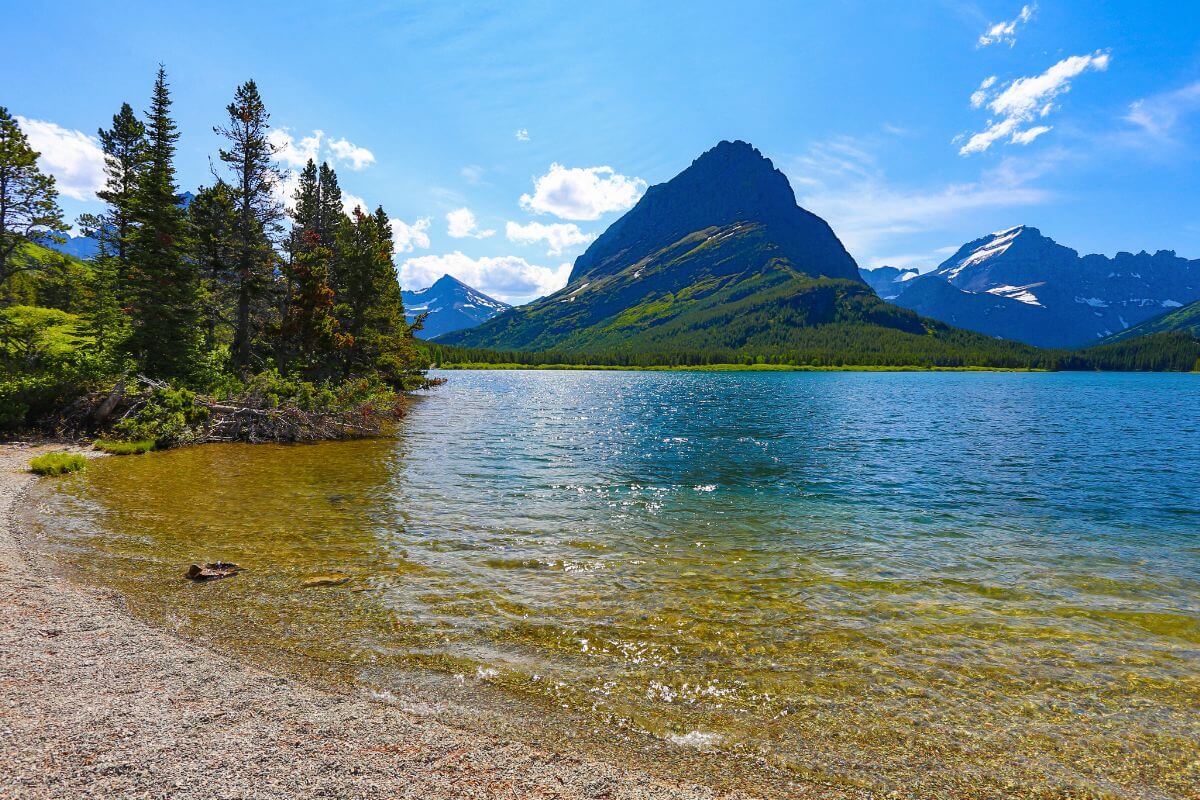
Huckleberries are a beloved fruit in Montana and are often used in many local dishes and products. So, where can you find these tasty berries?
When you ask a local about their favorite spots to pick huckleberries, don’t expect them to spill their secret spots.
Picking huckleberries can get quite competitive, as many locals and tourists alike flock to Montana for these sweet treats.
But don’t worry because we have researched for you. Huckleberries are usually found in rocky mountain areas. Some popular locations where you can find huckleberries in Montana include:
- Glacier National Park: Huckleberry Lookout Trail
- Glacier National Park: Marion Lake Trail
- Lava Lake Trail
- Danny on Memorial National Recreation Trail
- Leverich Canyon
- Kootenai National Forest: Baree – Bear Lakes Trail
- Grotto Falls
- Lake Inez Campground
- Morrell Falls Hiking Trail
- Boy Scout Road Hiking Trail
A couple of things to keep in mind though is to forage responsibly. Do not pick more than what you can consume or store. Help preserve the berries’ natural ecosystem and population by only taking the right amount.
Also, time your hike properly, and don’t go looking for berries at dusk or dawn because grizzly bears tend to be more active during these times. Remember that they are also huge fans of this fruit.
It would be best to hike with a group and consult park rangers or locals before setting out. Remember to wear loose and light clothing, bring protective bear sprays, and stay hydrated.
Huckleberry Storage Guide: 2 Ways
Huckleberries are a delicate and slow-growing fruit that requires a bit of extra care when handling to ensure their freshness and prevent spoilage.
When foraging for huckleberries, it is important to pick them off the plant gently to prevent damaging the plant and risking the next year’s crop.
Once you already have the supply that you need, we have listed two ways below on how you can properly store them for future consumption.
Option 1: Storing Fresh Huckleberries
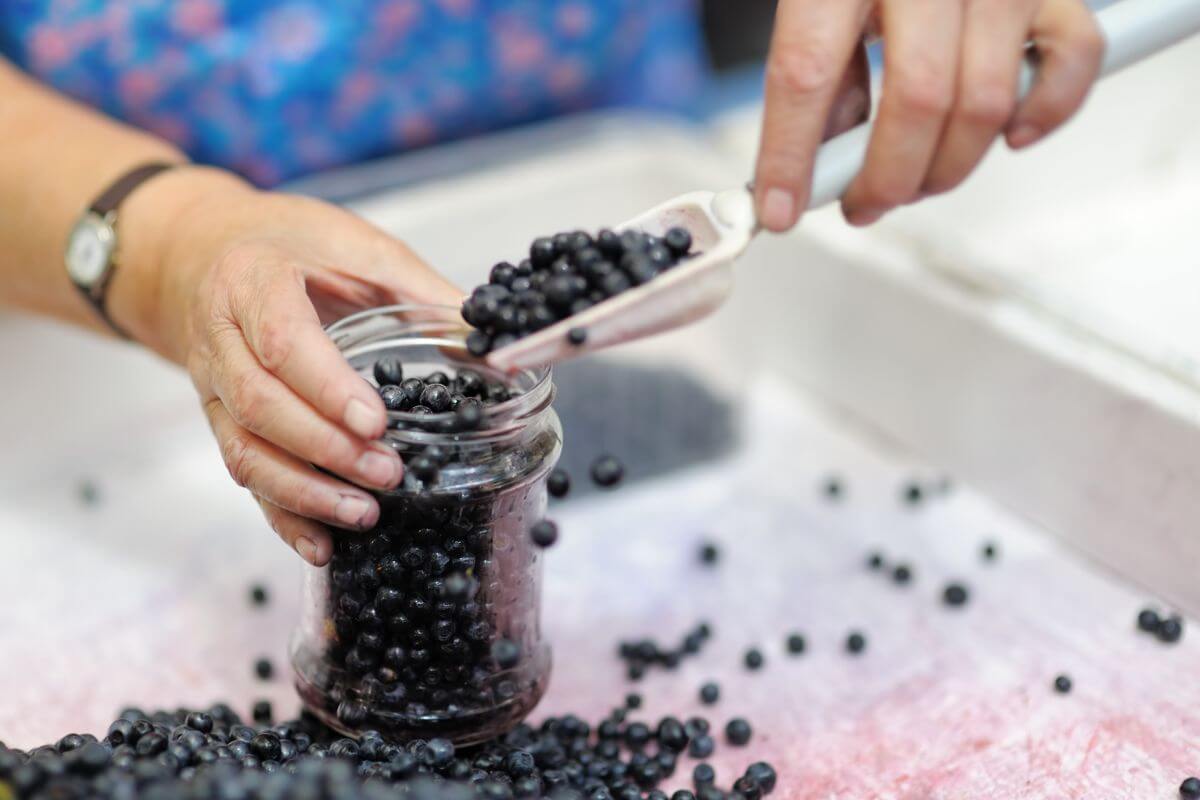
On a clean, dry, and tightly sealed container, place unwashed huckleberries in a single layer and store them in the refrigerator.
Avoid stacking the berries as it can cause them to get mushy when smashed against each other. This method can keep them fresh for up to a week.
Before consuming the huckleberries, it is important to clean them properly to prevent spoilage and remove debris.
The best cleaning practice for huckleberries is to rinse them gently under cold, running water. Remember not to soak or rub the berries as it can cause bruising and spoilage.
Option 2: Storing Frozen Huckleberries
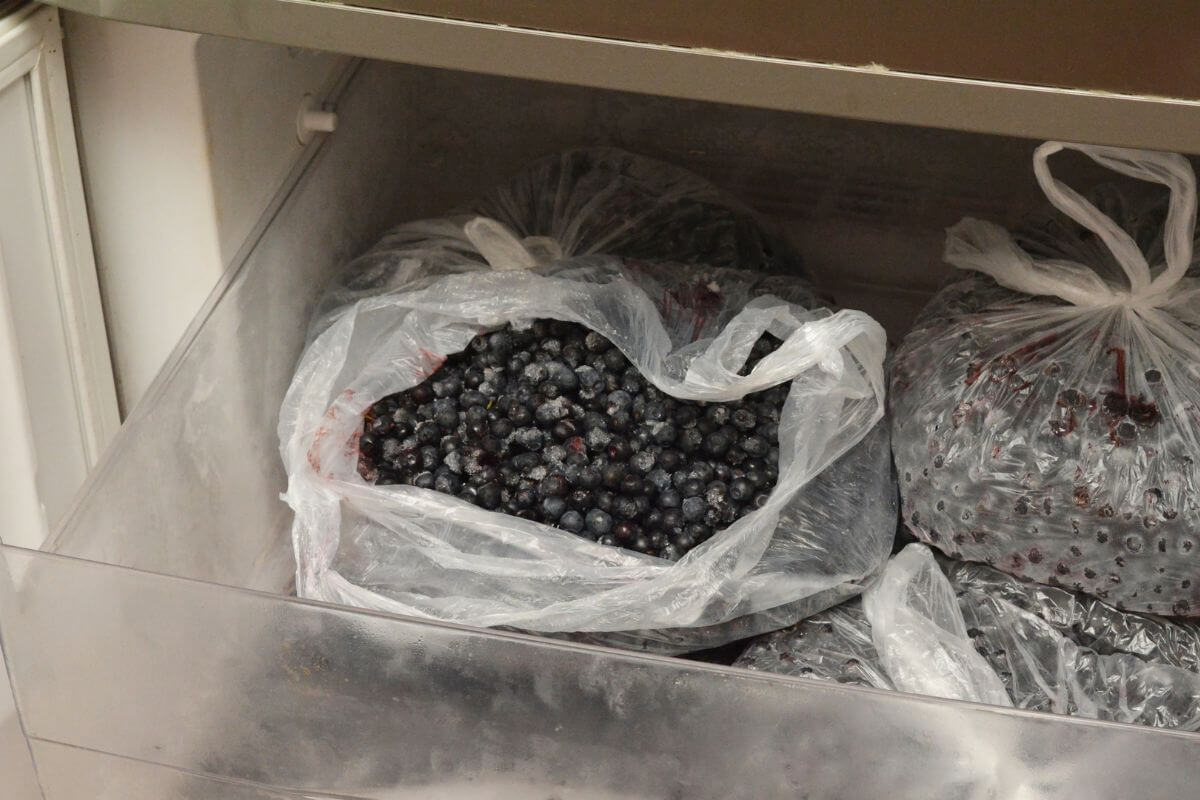
To prevent spoilage and extend the freshness of huckleberries, they can also be frozen.
Before freezing the huckleberries, rinse them gently and remove any stems, leaves, or debris. Place the berries in a single layer on a baking sheet and freeze them for a few hours.
Once frozen, transfer the berries to a freezer bag or container and store them. This will extend the life of the berries for up to 6 months.
Huckleberry Fun Facts
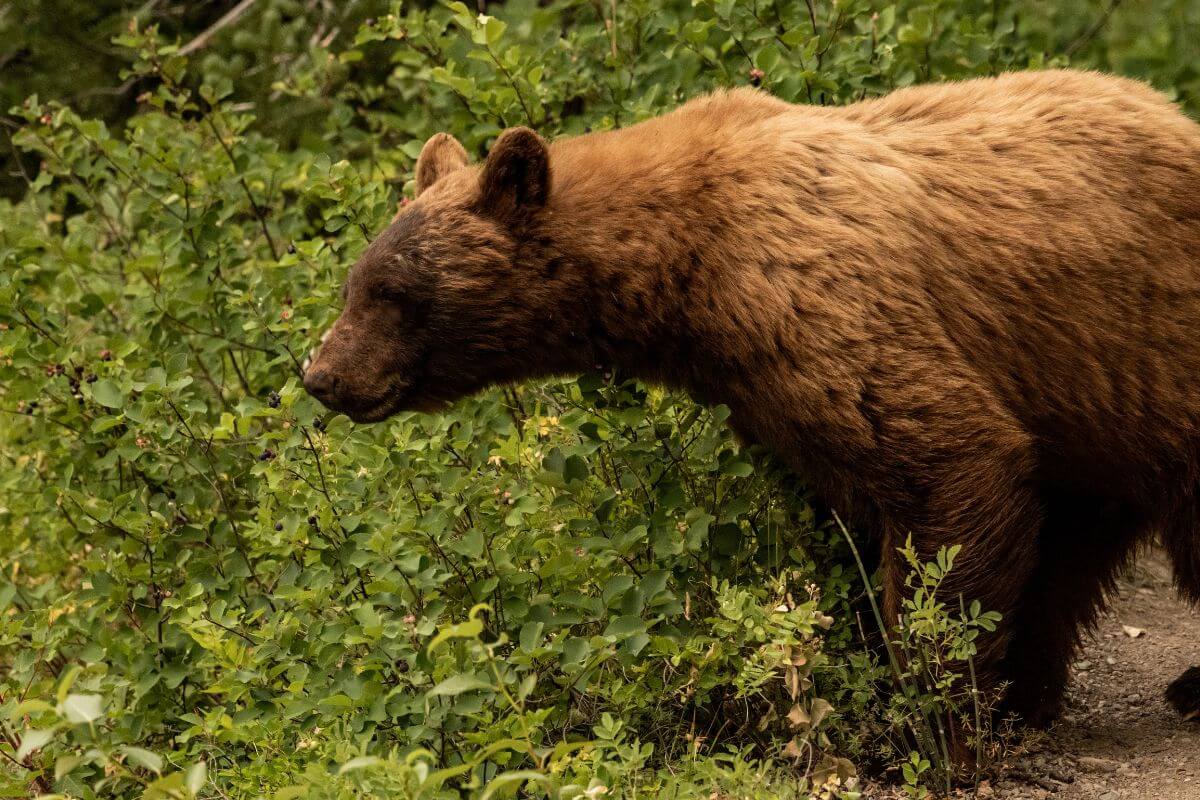
Huckleberries are more than just a delicious fruit – they have some pretty interesting qualities too! Here are some fun facts about these berries:
1. Did you know that huckleberries are a crucial part of a grizzly bear’s diet? These bears love huckleberries so much that they make up 15-50% of the grizzly’s diet.
2. In olden times, huckleberries were not just used consumed, but their deep purple-blue color was also used as an alternative to paint.
3. While huckleberries are a beloved fruit, not all types of the berry are safe to eat. Garden huckleberries, a variety that is used more for cooking than eating raw, can be mildly poisonous if eaten unripe.
Make sure to let this variety ripen before consuming, or stick to other types of huckleberries if you want to avoid toxicity risks.
4. Think oranges are the reigning champ of Vitamin C content? Think again! Huckleberries have high Vitamin C content, making them a smart choice for anyone looking to boost their immune system.
5. Huckleberries have been used for medicinal purposes by indigenous communities for years. Huckleberries and their leaves were used as medicines to treat ailments such as heart trouble, arthritis, and rheumatism.
Whether you’re picking them for your own enjoyment or to compete in a festival, there is no denying that huckleberries are a delightful fruit that people of all ages can enjoy.
Montana State Fruit Final Thoughts
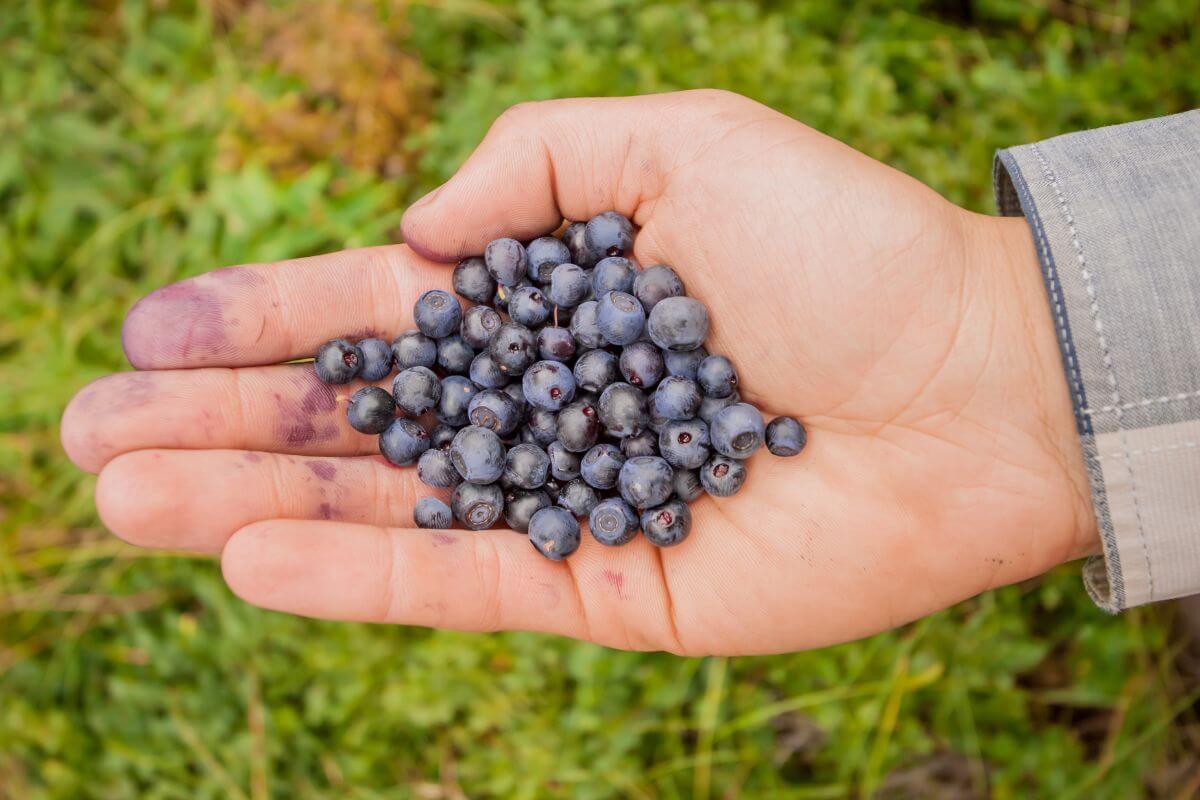
It’s not surprising that the huckleberry was chosen as Montana’s state fruit.
These berries are a source of pride for Montana because besides being a tasty fruit, huckleberries are also packed with Vitamin C and have been used for medicinal purposes for centuries.
Huckleberries are also used to make products such as jams, teas, and sweets.
While huckleberries are a cherished fruit, it’s important to note that not all types of the berry are safe to eat and caution should be taken especially when picking them from the wild.
Knowing how to store it properly is also a must.
Overall, huckleberries continue to be a delightful and significant fruit for Montana and all its residents.
Montana State Fruit FAQs
1. What Is the Official Fruit of Montana?
The official fruit of Montana is the huckleberry, a small purple berry that is widely known for its unique and delicious flavor. It plays a significant role in Montana’s history and economy and has several benefits and uses.
The official fruit was signed into law through House Bill 880 by Governor Greg Gianforte on May 10, 2023.
This is through the efforts of fourth-grade students at Vaughn Elementary School and R-Great Falls Representative, Lola Sheldon-Galloway.
2. Is Huckleberry From Montana?
Huckleberries are indeed native to Montana and can be found growing in the wild across various regions of the state, especially in rocky mountainous areas.
3. What Does a Huckleberry Taste Like?
Huckleberries have a unique flavor that is a combination of sweet and tart notes. Darker berries tend to be sweeter, while red huckleberries are more tart.
4. What Berries Are Native to Montana?
Montana is home to a variety of native berries, including raspberries, honeyberries, strawberries, currants, gooseberries, blackberries, and the beloved huckleberry.
These fruits are not only delicious but also have several health benefits due to their high antioxidant content.
5. What’s the Difference Between Blueberries and Huckleberries?
Huckleberries are generally smaller and darker than blueberries.
Red huckleberries taste more tart while darker ones taste more sweet.
On the other hand, ripe blueberries have a more uniform sweet flavor, though lowbush varieties have a more intense flavor than domesticated highbush varieties.
Huckleberries are also more difficult to cultivate than blueberries, as they require specific conditions such as acidic soil and a cool climate.
Eager to learn more about Montana? Give these other articles a read:

